17 January, 2000
Hello all!
I toured 3 new islands today. Bill Fraser, Donna Patterson, and Erik
Chapman were conducting penguin counts, on several islands so I took
advangtage of the opportunity to see the sights. Also accompanying us was
Doug Quin and Steve Dunbar. They were recording bird sounds on the
islands. Another boat carried the media crew, Charles Petit, Jim
LaScalzo, and Gary Braasch.
The first stop was Humble Island. Already a familiar place to me, I saw
penguins that I was actually able to recognize! Their individual behavior
is very distinct when you pay attention. I am amazed at how fast the
chicks are developing. They are forming obvious creshes. This is when the
chicks group themselves together....similar to a nursery. It won't be long
until they fledge.
The jewel of this gathering of islands is definitely, Dream Island. It is
about 5 or 6 miles from station. It is located 64°44'S, 57°48'W. I read
in a book titled, Geographic Names of the Antarctic, where it says Dream
Island is so named "because among the island's natural features are a cave
and, in summer, a small waterfall, with mossy patches of grass." Sound
like paradise? Well it could have been. Not only is it a beautiful
peaceful island with clear water pools etched into the shore, but it is
habitat to approximately 300 pairs of chinstrap penguins. These birds were
amazing. Very regal in appearance and quite photogenic. Doug and Steve got
some wonderful sound recordings of their calls to one another.
After a relaxing lunch on a rock cliff overlooking the ocean, we parted
company. I stayed with Bill's group; the photographers went off to pursue
other sites, and Doug and Steve, pursued other sounds as well. We visited
Cristine Island to do a quick Adelie penguin censor. Data is recorded on
the number of adult penguins, occupied nests, chicks, and creshes. Next
stop, Cormorant Island, so named because it was once a nesting site for as
many as 1000 pairs of Cormorants, or blue-eyed shags. In January 1989, an
the Argentine resupply ship, Bahia Paraiso, sank in the vicinity of Palmer
Station. Approximately 600,000 liters of diesel fuel spilled into the
waters causing devastating results to several islands. The Cormorant
population has not been able to recover. Now there are only a fraction of
these birds found on Cormorant Island. It is feared that in a few years
they may be locally extinct.
Once the penguins and Cormorants were counted, and the chick from a pair
of renegade skuas was weighed and measured, it was time to return to
station. What a wonderful experience today was. I don't think I will ever
get used to the wonder and beauty of this place.
Until tomorrow...
Mimi
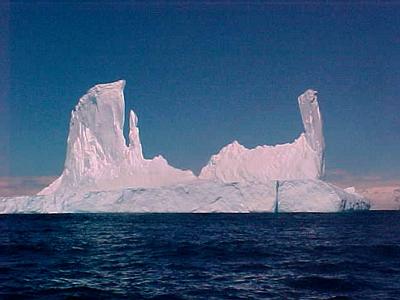
A striking iceberg off the coast of Dream Island.
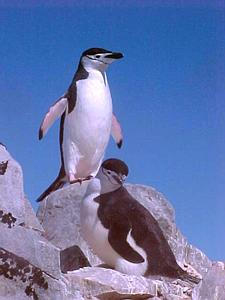
Regal looking chinstraps.
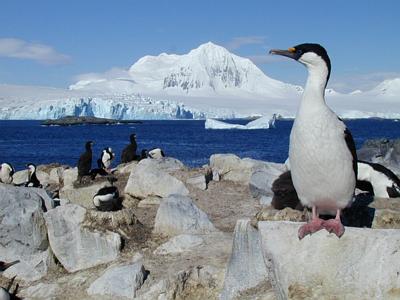
Another stunning photo of a blue-eyed shag.

Close up of a Cormorant.
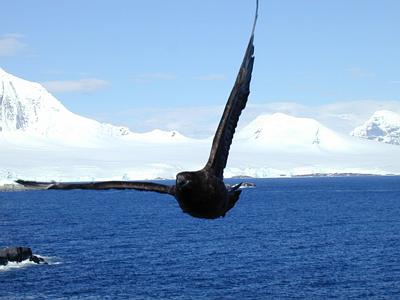
While Donna was weighing the skua chick, Bill had to divert this angry parent. Photo by Donna Patterson.

Great photo of a pair of brown squas displaying their wings. Photo by Donna Patterson.
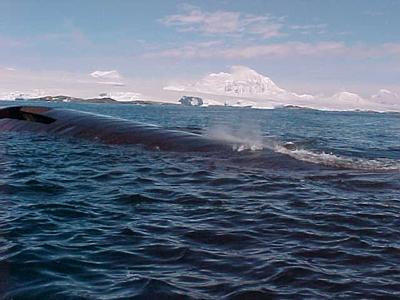
The Bahia Paraiso, or what remains of it, 10 years after is was shipwrecked.
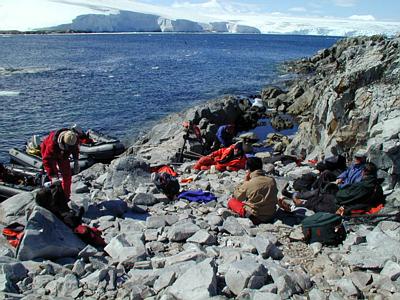
Lunch time at Dream Island. Photo by Donna Patterson.
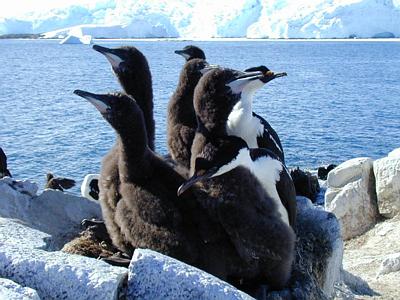
The small nest manages to hold a group of chicks and adult Cormorant. I was shocked at the size of these chicks. Many of them are as large as the adults.
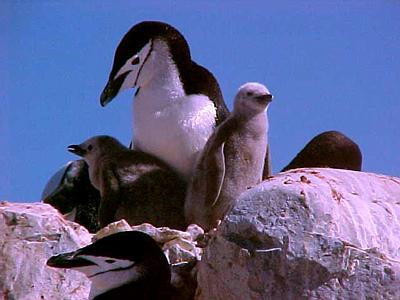
Chinstrap penguin with chicks.
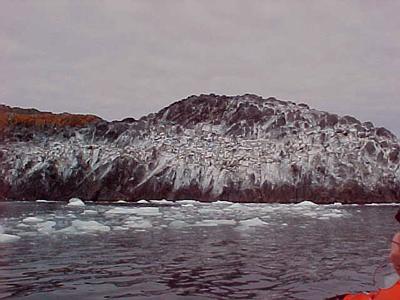
Over 1000 pairs of Cormorants once nested at this site. The white streaks on the rocks are evidence of their past presence here.

Contact the TEA in the field at
.
If you cannot connect through your browser, copy the
TEA's e-mail address in the "To:" line of
your favorite e-mail package.
|
